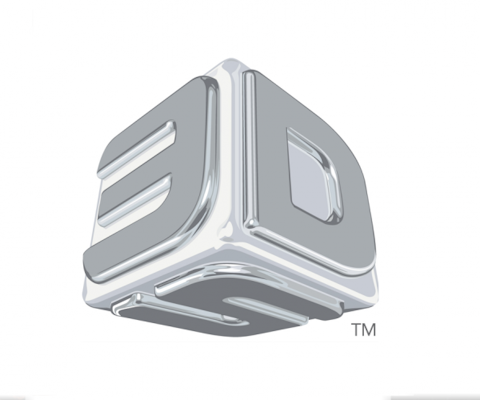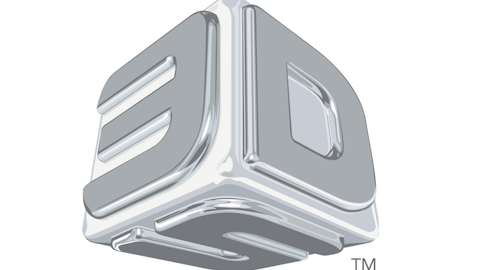3D Systems Corporation (NYSE:DDD) is at the leading edge of a disruptive technological revolution, with the broadest portfolio of 3-D printers in the industry. However, despite years of earnings growth, 3D Systems’ share price has risen even faster, and today the company sports a dizzying valuation. To help investors decide whether the future of additive manufacturing is bright enough to justify the lofty price tag on the company’s shares, The Motley Fool has compiled a premium research report on whether 3D Systems is a buy right now. In our report, we take a close look at 3D Systems’ opportunities, risks, and critical factors for growth. You’ll also find reasons to buy or sell, and receive a full year of analyst updates with the report. To start reading, simply click here now for instant access.
Isaac Pino: Hey, Fools, I’m Isaac Pino covering the Industrials and Consumer Goods sector here at The Motley Fool. Today I’m joined by Blake Bos, a special guest.
We’re talking about 3D printing, a really niche but exciting subsector of industrials and manufacturing, perhaps. Blake, you recently went to the Patent Trademark show, I believe.

Isaac: OK. Of course it’s an industry that’s starting to really just take root. We’re not even sure exactly what software is going to be built in the future, but we know that at some point patents are going to be involved with producing everyday items that we use, and also some perhaps that will be created in the future.
I want to understand, as a consumer, what your thoughts were on what you saw at the show. One thing you did see was some of the actual machines in action. That sounds really interesting to me. What were your takeaways?
Blake: The show was great to go to. I think it’s good for investors, if you have the opportunity to go to things like this because it really provides a unique perspective, a big-picture perspective. You’ve seen 3D printing, a year ago nobody really knew about 3D printing, investors.
Now it’s this vogue thing. You’ve got to watch out when things get there. It’s nice to take a step back and actually look at the businesses and what the operating environment was.
At the Patent Trade Show Office, my big takeaways were that it’s looking like the consumer market, as far as household printers — like the 3D Systems Cube Printer, Makerbot, and there’s a few others coming to light now — that’s getting pretty commoditized, I think.
In the future you’re going to see that razor/blade model: low margins on the printers, they make all their money on the back end, on the printing materials and the spools.
Then another thing that I like to look at here is the ecosystems. Your average Joe, he buys a Makerbot or a 3D Systems printer at home, he’s not going to be able to just get on his (unclear) or a CAD software and type up a design. That’s a little too complex, and that’s not going to get adoption.
You’ve got to have this easy-to-use software and a big community of things for people to print. That’s something investors should really watch.
With the two companies that are really making big moves right now, Makerbot and 3D Systems, you can get on their website. Go to Cubify.com or Makerbot.com. Makerbot has this Thingiverse; you can get on there and look at the designs and be like, “As a consumer, would I be more likely to use this service, or this one?”
As far as consumer printers go, that was my big takeaway from the event, was it’s getting pretty competitive. Also, 3D Systems is really going all in there. I do like the company. They seem to have their head wrapped around it very well, and they’re creating a quality product that won some CES awards.
Isaac: Interesting. Makerbot is not a publicly traded company at this point, right?
Blake: No, not at this point, but I did talk to Bre, the CEO of the company. He didn’t say they were going to go public, but when I asked him I was like, “What does it look like for an IPO in the future?” and he kind of laughed and said, “It’s wide open,” so it’s not unrealistic to expect it.
He’s a great CEO. He’s great at marketing, and I don’t see why they wouldn’t because they need to get some capital, I would imagine, to compete with 3D Systems because they’re becoming quite the juggernaut.
Isaac: It seems like 3D Systems and Stratasys, Ltd. (NASDAQ:SSYS) are both buying up a lot of the smaller players, so if you want that rapid growth and you want to be exposed to all the different aspects of 3D printing, you do need to have that access to capital, I think, going forward.
Blake: Yeah. Stratasys, I spoke to them at the conference. I asked, because they don’t have a consumer printer, and I talked to a technology engineer with the company. He mentioned that it’s not a market they particularly would like to get into, but they’ve realized they need to be in there.
He used an analogy with Canon. Canon Cameras, they have their really high-end models where they make a good margin, and then they have the low-end ones as well. He used that analogy to say Stratasys would need to have a low offering, otherwise you’re missing out on exposing yourself to that portion of the market that may translate into upselling into the higher-margin products later on.
It looks like Stratasys probably will be getting into that, I would predict, if I’m going to make a prediction there. Overall, hypercompetitive; it’s kind of a dicey sector to invest in right now, I would say, just because there’s only two options at the moment.
Isaac: OK. To drill down on that point a little bit further, there’s a couple things as an investor, especially a casual investor; I want to be well aware of what the business model is for the company. It sounds like it’s a razor and blades model, a lot like Gillette back in the day. You sell the printer, and then you sell the materials.
Blake: Yeah, the refills.
Isaac: Great business model; I think you can explain that on a paper napkin over lunch with your friend. The other thing to look at is, “Can I understand the business?” or “Can I interact with the business?”
You mentioned a couple of these are consumer-facing businesses, so there’s that ability to see exactly what they’re doing behind the scenes, as opposed to just believing in this hypothetical concept that’s going to play out.
The third thing is valuation. If you look at these companies right now, are the expectations a little bit high when you have valuations that are perhaps 100 times earnings?
Blake: This depends on your investing discipline. If you look at a P/E ratio on Stratasys or 3D Systems when they were around 100, their companies are growing revenues with acquisitions at very high rates, but not near 100%. Then you’ve got to say, “That premium I’m paying over the growth rate of the company, is that intangibles as far as superior management? Is it opportunities in a game-changing industry like 3D printing,” where in the long term you could see huge, phenomenal things here?
When you are investing, you need to be aware of what that premium is coming into play, but when you try to rationalize stuff, that’s when you’ve really got to pay attention. “Why am I rationalizing it? Why am I paying 50 times earnings, what normally I would pay?”
You want to invest in leaders, people with moats. My problem with investing in this space right now — I used to be an investor in 3D Systems — I think 3D Systems is probably the leader there. Their management sounds great, they’ve done a lot of acquisitions and hopefully that works out well for them, but it is tough to bring in acquisitions, as we’ve seen with other companies, and make those …
Isaac: Integration challenges.
Blake: Integration is not easy, but they did a great job with Geomagic, getting the CEO of that company. She’s awesome, and I think that’s a great strategy with them. You don’t really hear a lot with Stratasys, but overall there’s only two companies you can invest in.
It boils down to that, so you’ve got a fixed supply of shares that you can invest in, in 3D printing, and you’ve got a ton of demand from the public that wants to be in this space, so that’s going to drive the value of these up.
I think you’ll see other companies come in here, become public — like ExOne for example, which is an industrial company — they’ll have a high valuation too, but there’s just a tremendous demand for shares right now.
As a long-term investor myself, it’s just not comfortable for me, with the current demand and supply. Then you have companies like General Electric Company (NYSE:GE), for example, buying 3D printing companies. There’s just a lot of uncertainty in the industry. I would like to think that Stratasys and 3D Systems are going to be there in 20-30 years but it’s just not comfortable enough for me, as a really deep value guy.
Other people that are more comfortable with that, and are psychologically oriented to invest like that, will probably be successful, but me, I know myself and I know that when I see valuations get like that I’m going to do something stupid. I’m going to sell when I shouldn’t, so it’s not a space I should be in.
Isaac: It’s not a very good idea.
Yeah, as a value investor I think that’s a very valid point. For any of the growth investors out there, it’s always good to not have all your eggs in one basket. With the 3D printing you might want to be exposed to other companies, other stocks.
The article The Big Picture on 3-D Printing originally appeared on Fool.com and is written by Blake Bos and Isaac Pino, CPA.
Blake Bos has no position in any stocks mentioned. Isaac Pino, CPA owns shares of General Electric (NYSE:GE) Company. The Motley Fool recommends 3D Systems and Stratasys. The Motley Fool owns shares of 3D Systems, General Electric Company, and Stratasys and has the following options: Short Jan 2014 $55 Calls on 3D Systems and Short Jan 2014 $30 Puts on 3D Systems.
Copyright © 1995 – 2013 The Motley Fool, LLC. All rights reserved. The Motley Fool has a disclosure policy.



